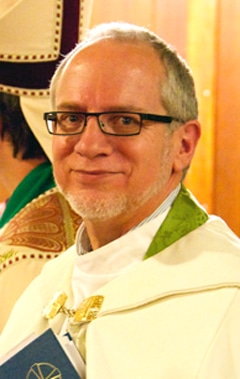Council of the North Leads the Way: Structural and Cultural Renovation in Athabasca
Anyone who’s spent significant time working in the Church at any level—parish, diocesan, or national—knows it is struggling to adapt its structures to new realities: an increasingly secular culture, aging congregations and depleted treasuries.
In the Council of the North there has been a move in recent years to face these new realities with innovation and an openness to change. Council Chair, the Rt. Rev. Michael Hawkins, says, “We are no longer prepared to see our mission shaped or limited by structures but are committed to structures shaped by mission.”
And indeed Council of the North dioceses have been leading this change on the ground. In the Diocese of Athabasca, perhaps this is because these realities, especially the financial ones, are really not so very new. The Very Rev. Dr. Iain Luke, Dean of Athabasca, says, “I’ve been around the church nationally, I’ve seen the hand-wringing: ‘We can’t afford to do things as we used to…’ and I say to myself: ‘We haven’t been able to do things that way ever’.”
Athabasca Bishop, Fraser Lawton, points out: “We are pretty thin in terms of structure; for example, we have been without an archdeacon for several years due to our financial situation, stemming out of the residential schools settlement.” While this is clearly a challenging situation, it may be that this “thin structure” has allowed the Diocese of Athabasca to be a bit more nimble when it comes to adapting to change. Bishop Lawton continues, “What serves the mission we have, as opposed to filling offices?’”
Answering this question was a major focus of Athabasca’s most recent synod. The result? “So we left synod, put a whole bunch of budget lines together in the line of mission and training…and we’ve decided we do want an archdeacon, but not an executive, but rather one focused on training and building up parishes,” explains Bishop Lawton.

On Nov. 10, Athabasca began a new phase in its archdiaconal ministry: The Rev. Canon Terry Leer was collated as the diocese’s first “Archdeacon for Mission Development.” Archdeacon Leer describes the significance of this: “As archdeacon I will not be serving in a primarily administrative role—a clear break with centuries of tradition.”
The hope is that this structural change will deepen and broaden into something even more transformative—a cultural change. “In the broadest terms, my ministry is to work towards the transformation of the culture of the Anglican Diocese of Athabasca,” says Archdeacon Leer. “No Christian may be simply a passive recipient of ministry. Accepting the command of the Great Commission (Mt. 28), we all are challenged to go out into the world in mission, which is God’s gift to us—that is, both the world and the Commission are God’s gifts to us.”
And indeed, the world is on the doorstep of this diocese: like several other Council dioceses, Athabasca is home to a diverse population. Dean Luke describes a recent Pentecost service: “We had Cree, French, Filipino, Spanish (a family from Columbia), Ikbo (a language from Nigeria)—all from a congregation of about 60 people in the middle of Northern Alberta.”
Nonetheless, the Diocese of Athabasca, like all Council dioceses, has particular northern challenges. Bishop Lawton describes Athabasca: “We’re not in the Arctic; we don’t get around by skidoo…but we’re large geographically, small in population and spread far apart.” And sometimes the typical solutions just don’t work. For example, Bishop Lawton points out, “Some of the southern talk of amalgamating or merging parishes is not easy for us to do if the next parish is 100 km away.”
At Athabasca’s synod last fall, members identified some growth edges: “We really need some equipping in various areas with regard to community, with regard to discipleship, knowing the gospel better for ourselves and being poised to share that,” says Bishop Lawton.
The diocese also wanted to make the boundaries between parishes “more permeable” in order to make better use of the gifts of both clergy and lay people—especially those gifts that are “transportable” (leading a Bible study, running a VBS, organizing a soup kitchen).
And Archdeacon Leer will be eager to help parishes make those connections, to encourage partnerships in sharing the Gospel. He says, “Terms like ‘mission,’ ‘ministry,’ ‘discipleship,’ evangelism,’ ‘proclamation’ and ‘mentoring’ must become second nature to Anglicans in this diocese. My goal is to work with the local clergy and laity to discover forms of mission, ministry and discipleship that will work in their particular contexts.”
The willingness of the bishop and the Diocese of Athabasca to abandon structures that had allowed mission to fade will model for parishes the freedom they have to do the same. Archdeacon Leer says this focus on mission is “simply what our clergy have been trying to do for a long time, but the demands of parish ministry often push such realities into the background.” The job of the new Archdeacon for Mission Development? To bring back into the foreground these “vital aspects of Christian life.”
Interested in keeping up-to-date on news, opinion, events and resources from the Anglican Church of Canada? Sign up for our email alerts .
